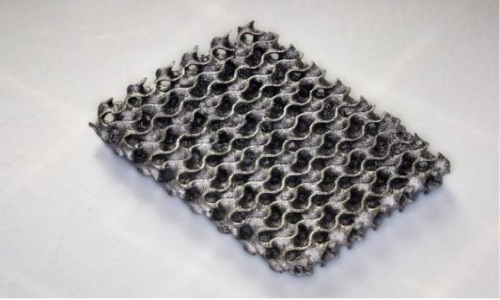


 3:9:20
3:9:20  2024-09-06
2024-09-06  888
888

Those of you following the Advanced Composite Solar Sail System may have heard that its booms and sail are now deployed. It is receiving light pressure from the Sun to propel it through the Solar System.
Like a test pilot in a new aircraft, NASA are now testing out just how it handles. Before deployment, the spacecraft was slowly tumbling and now the controllers will see if they can get it under control and under sail power.
The reflectivity of the sail means it's an easy spot in the night sky, just fire up the NASA app to find out where to look.
Solar sails are an ingenious propulsion technique that employ pressure from sunlight to generate low levels of thrust. As the photons of light strike the surface, they transfer momentum to the solar sail and therefore the spacecraft is accelerated.
The thrust is small but when applied over long periods of time can provide a very efficient way to propel small spacecraft. The first successful deployment of a sail occurred in 2010 with the IKAROS (Interplanetary Kite-craft Accelerated by Radiation of the Sun) spacecraft launched by the Japanese space agency JAXA.
The Advanced Composite Solar Sail System (ACSSS) was developed by NASA to test the technology. The boom that supports the sail is made of lighter and more durable composite materials.
By testing the deployment of the booms and efficient sail operation, NASA hopes to prove the viability of the technology.
The ACSSS uses lighter, more flexible materials than previous attempts and will enable more efficient deep space exploration, astroid rendezvous, and other missions requiring low-thrust propulsion. ACSSS orbits the Earth in a low orbit with an altitude of between 500-600 kilometers.
Following launch, it was released purposely without attitude control and was as a result tumbling through space. Once the analysis has been completed, and the boom and sail deployment has been understood, the team will re-engage the attitude control to stabilize the spacecraft.
The next phase then begins as the team analyze flight handling and dynamics to adjust the spacecraft's orbit.
Since the deployment of the sail, the operations team continue to receive images and data to help them understand how the boom technology has deployed.
So far so good it seems for demonstrating the deployment and initial operations.
The team will continue to monitor and analyze the incoming data and images in preparation for further technology tests and demonstrations in the week ahead.
Any keen-eyed sky watchers may be able to spot the spacecraft as it passes overhead. The high reflectivity of the sail will make it clearly visible to the unaided eye.
NASA have added a new feature to their app so that users can set up notifications to get alerts when it is visible from their location. NASA is inviting the public to share their pictures of the spacecraft online using the hashtag #SpotThe Sail.
Reality Of Islam |
|

Poisoning i

Water may s

"It is

The process
 9:3:43
9:3:43
 2018-11-05
2018-11-05
10 benefits of Marriage in Islam
 7:5:22
7:5:22
 2019-04-08
2019-04-08
benefits of reciting surat yunus, hud &
 9:45:7
9:45:7
 2018-12-24
2018-12-24
advantages & disadvantages of divorce
 11:35:12
11:35:12
 2018-06-10
2018-06-10
 6:0:51
6:0:51
 2018-10-16
2018-10-16
 7:45:39
7:45:39
 2018-06-21
2018-06-21
 8:30:23
8:30:23
 2022-03-03
2022-03-03
 5:57:34
5:57:34
 2023-03-18
2023-03-18
 10:47:11
10:47:11
 2022-11-22
2022-11-22
 8:39:51
8:39:51
 2022-09-23
2022-09-23
bahlool & the throne of haroun rashid
 8:20:35
8:20:35
 2018-06-21
2018-06-21
 1:38:41
1:38:41
 2021-12-08
2021-12-08
 5:41:46
5:41:46
 2023-03-18
2023-03-18
| LATEST |